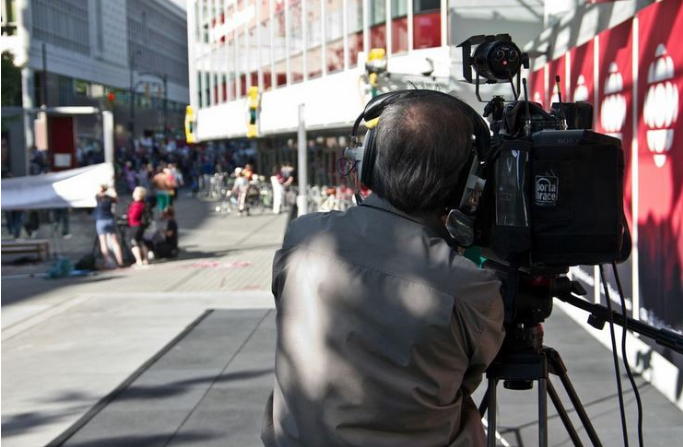By Gregory Furgala for the Local News Conference
Across the United States, reporters and editors at local newspapers are working longer hours, in smaller newsrooms and with fewer opportunities for advancement.
They’re also optimistic about the future of local news, and their futures in it, a recent study in the Columbia Journalism Review has found.
Damian Radcliffe, the Carolyn S. Chambers Professor in Journalism at the University of Oregon and co-author of the study “Life at small-market newspapers: A survey of over 400 journalists,” says that optimism stems from the unique opportunities small markets afford local newspaper reporters, such as covering under-reported stories and living in the community they work in.
“What’s often really unique to local organizations is the opportunity to bring people together, to actually bump into your readers,” says Radcliffe, “which gives a great opportunity for storytelling in a way that’s much harder to do in a major metropolitan—particularly in a large national publication.”.
He discussed his research on a panel about the economics of local news, joined by Nikki Usher Layser, an associate professor of media and public affairs at George Washington University; Nicole Blanchett Neheli, a professor of journalism at Sheridan College; and panel moderator Sherry Yu, an assistant professor of journalism at Temple University.
For the study, Radcliffe and co-author Christopher Ali, an assistant professor of media studies at the University of Virginia, interviewed 60 industry experts, analyzed data from the Pew Research Center, the Engaging News Project, the American Society of News Editors’ Newsroom Employment Diversity Survey, amongst others, and created an online survey. A majority of the 420 journalists and editors who responded reported that, despite the documented challenges associated with working at a newspaper, they were still eager to embrace new digital tools and looked forward to the future of local news.
Local newspapers are often the only source of original reporting in town, Radcliffe says. Serving smaller markets provides both local newspapers and their reporters with unique opportunities they need to leverage to survive.
“Locality is a real asset,” says Radcliffe, “Both in terms of being able to tap into an audience for readership, and also in terms of potential revenue and local ad dollars.”
Local newspapers still aren’t spared from the general downward trend that’s taken hold of the newspaper industry, though. According to the Pew Research Centre, in 2016, newspapers’ ad revenue suffered its steepest decline since 2009, and newsroom employment continued to fall. The only difference, Radcliffe says, is it happens at a slower pace in smaller markets.
Despite their optimism, reporters are still ultimately overburdened and under-resourced, and they’re still trying to do it all.
“You can do anything,” says Radcliffe, “But you can’t do everything.”
He suggests a less-is-more approach, saying reporters should limit the scope of their work, hone in on their strengths, and play to them.
Stepping away from the 24-hour news cycle could be a start, and it could even strengthen the newspapers reporters work for.
While speaking with reporters at the Seattle Times, Layser says she saw an “obsession” with updating stories online, an impulse prompted by a metrics-driven news environment—one story about a pitbull, she notes, was updated 24 times—and she says it might hurt newspapers in the long-run.
“Most people are coming to you on the web,” says Layser, “And all they’re seeing is a pitbull story instead of that great investigative feature that you actually do have.”
“This may, in turn, undermine your overall authority.”
Neheli has seen that process play out at at the Metroland-owned Hamilton Spectator and Waterloo Region Record.
At Metroland, one digital team handles both websites, and its mandate to get pageviews puts it odds with local reporters who are tasked with providing local content to their readers. As a result, local news, which typically doesn’t prompt a spike in traffic, loses out to viral content.
“At the Record, they really want to keep it local,” says Neheli, “But they have to broaden the focus of local to get more pageviews.”
Competing goals are a source of friction, says Neheli. Record editors call Hamilton wanting more local content on their website and complain that their readers don’t like what they’re seeing, but for the online team, “it’s about the metrics.”
The focus on up-to-second performance might be counterproductive in the long run, as well. While Neheli was researching Metroland, she found that local stories ultimately performed better than viral content in the long run. Moreover, she says, its print newspapers, including classifieds, still generate about five times as much revenue as digital.
Despite ongoing problems, Neheli says the journalists she spoke to are still eager to report.
“They’re doing great work, they’re very proud of the work, they’re very supportive of each other.”
While the way forward for local newspapers may not be clear, Radcliffe cautions against buying into the worst predictions about the death of local news.
“Too often, the doom and gloom narrative about the future of journalism, and in particular the future of newspapers stems from journalists themselves,” he says.
“If we keep telling audiences that our industry is dying and is on its last legs, then there’s risk of it becoming a self fulfilling prophecy.”
This story was originally posted on the Local News Website, and is republished here with the editor’s permission.

